GRAE 2019 Panels
Panels
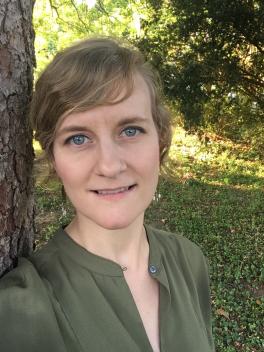
Ava Morgan, The Ohio State University
Ava Truman Morgan is a PhD candidate at The Ohio State University. Ava received her MA in Arts Administration from Goucher College and a BA in Philosophy from Earlham College. Her research uses arts-based methods to explore the way trauma is experienced in the body. Her work also engages philosophical concepts to bring new voice to experiences of the everyday. Before attending Ohio State, Ava served as Executive Assistant for the Ohio Humanities Council, the state-based affiliate of the National Endowment for the Humanities. For the past three years, Ava has worked as the Art & Resilience intern at the Wexner Center for the Arts evaluating impact for a suite of programs that engage individuals living with brain/mind trauma, veterans, and women emerging from incarceration. She continues to serve as Public Art and Education Fellow at the Dublin Arts Council, developing programming for a two-year Art & Wellness initiative. Both experiences shape her interest in using art as a tool to build agency and meaningful relationships to place and others. In her free time, Ava enjoys dancing, hiking, and travel.
Dissertation Title: Trauma and the Body: An Inquiry through Philosophically-Engaged Fiction
Abstract
Current approaches to trauma in art education most often rely on psychological framing focused on intervention, dysfunction, and behavioral challenges. However, artmaking’s potential to harness ambiguity, multiple ways of knowing, and to offer creative ways of approaching phenomena and the experience of the self in the world disrupts stigmas, redundancies, and limitations of purely psychological approaches to trauma. Using a transdisciplinary approach that blends fiction-based research, embodied inquiry and phenomenological perspectives, this study explores the embodied experience of trauma as a site for philosophical inquiry and opens new possibilities for theorizing trauma as a universal human experience that shapes the way we relate to place and others. By analyzing the work of artists who also write fiction, this research theorizes the turn to fiction as an arts-based practice that obscures disciplinary boundaries and expands approaches to research to allow for a second-seeing of phenomenon. While adding to the growing body of arts-based scholars redefining the possibilities of emergent methodologies in art education, this study considers more specifically what visual artists’ turn to fiction as an embodied form of inquiry can have for further extending the application of arts-based research in art education as being uniquely privileged for approaching visceral phenomenon.
Chelsea Borgman, Pennsylvania State University
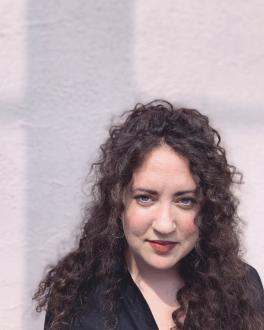
Chelsea Borgman is an artist, educator, and writer. She is currently pursuing a dual-title master’s degree in Art Education and Women’s, Gender, and Sexuality Studies at The Pennsylvania State University. Borgman is the 2019 recipient of the Judy Chicago Art Education Award. Her research investigates art-making as an emotional strategy for grieving girls. Her artwork takes the form of immersive installation, paper collage, and fused glass. Borgman is passionate about the power of art-making to teach and transform. She is committed to working with young women; using art-making as a means to explore feminist principles, practices, and concerns.
Dissertation Title: The Transformative Power of Grief: Girls' Loss and Reimagining the Self through Art
Abstract
Borgman’s research explores the potential of an emergent student-driven curriculum to support girls through grief, puberty, and navigating the social and political systems which impact women’s lives. Grief is fundamentally transformative. Borgman proposes art-making as a powerful and adaptable emotional strategy for girls who are reestablishing their self-identity after loss. Through Critical Action Research, Borgman reflects on her practice while working with a group of grieving girls (ages 9-14). In this study the group will develop, plan, and create an art-making project, opening up opportunities to explore their experience and changing identity in the wake of loss.

Jessica Pissini, The Ohio State University
Jessica is a PhD candidate in the Arts Administration, Education and Policy program at Ohio State, specializing in Museum Education. Jessica received her bachelor’s degrees from Penn State University, studying classical archeology and integrative visual arts. From State College, she went on to work in Los Angeles as a designer and maker of props, sets and costume pieces for TV shows and films - the Hunger Games series, Star Trek, and a handful of Marvel movies among them. With her creative background, she also worked as a site photographer and digital artist in Egypt on an archeological excavation which led to future interest, work and research in the museum field. Jessica completed her master’s degree at Duke University in digital art history, researching and creating interactive museum displays at the Nasher Museum of Art in Durham, NC. At Ohio State, Jessica has collaborated with the Advanced Computing Center for the Arts & Design (ACCAD) in an effort to explore media design from an arts education lens. Her dissertation research aims to establish virtual reality as an artistic medium through investigating the affordances, creative phenomena and experiential aesthetics of the virtual platform.
Dissertation Title: Embodied by Design: The Presence of Creativity, Art-making, and Self in Virtual Reality
Abstract
From a scientific and technical viewpoint, virtual reality (VR) is a well-researched and established technology. However, from an arts perspective, virtual reality has very few, if any, distinct parameters or defined experiential aesthetics as an artistic medium. My project aims to break-down the affordances of virtual reality and its design aspects in an effort to recognize VR as a contemporary artistic medium and to explore the cognitive, experiential and creative phenomena of virtual art-making. In my study, I question what type of immersive process virtual artists experience through the embodied, open-ended play of art-making from within the medium which, unlike any other artistic medium, challenges our physical senses and embodied awareness in new and unexpected ways. Through an arts-based research approach and reflection on personal experience with the medium, in addition to the analysis of participant interactions, feedback and virtual artifacts, I also question how artists and educators can use the virtual medium to inspire creativity within art museum spaces. The final section of my research looks as ways to integrate VR into art museums so that the visitor transports from viewer-of-art to maker-of-art, allowing them to construct their own active and creative art experience from within the medium.
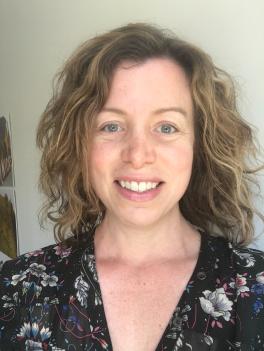
Michelle Attias, The Ohio State University
Michelle Attias is a PhD candidate in the Department of Arts Administration, Education and Policy with a dissertation research focus on neurodivergence and its intersection with artmakingand art education. A practicing artist, Michelle has worked as a commercial artist, muralist and art educator in Columbus, OH and has brought a variety of community projects to fruition through collaboration with arts organizations such as the Greater Columbus Arts Council and Ohio Arts Council. As a program manager for the East Asian Studies Center at The Ohio State University, Michelle designed K-12 outreach programming bringing local artists to high poverty area schools to enrich students’ art experiences through community projects, art installations and cultural presentations. Michelle holds a dual BA from Dickinson college in Fine Arts and English Literature.
Dissertation Title: Journaling in Search of the Neurodivergent Self: An Arts-based Research Project Dialoguing with Kurt Cobain's Journals
abstract
The purpose of this study is to examine my own embodied experience of neurodivergence with AD(H)D through the experiential process ofartmaking and journaling. As aneurodiverse artist engaging in active dialogue with artists’journals (Kurt Cobain and Lee Lozano), I map theprocess through which neurodivergent individuals use journaling as a site of political resistance to cope and respond to negative social discourses and to create new narratives. Unintended for public consumption, journaling is a private activity and a unique window on artistic process through encounters with the everyday, narrative reflection, story, poetry, sketches, grocery lists,and rants thatseep and leak into thoughtful reflections about the world and one’s relationship to it. Positioning my own journal responses to other neurodivergent artists through the lens of critical disability studies, I tracecommonalities and divergences in process,identity, and the rejection of dominant discourses. This research positions neurodivergent artists as active subjects, working against and through the social construction of neurodivergence as “disorder,”creating new possibilities andnew understanding. Exploring these internal emotional landscapes, intentionalities, subjectivities, lived experiences, challenges, imagined realities, and daily encounters living with neurological difference, this research rejects and exposesableist discourses, embedding intentionality and agency. Journaling creates an opening to considerneurodivergence asresearch process, and offerspractice-based approaches to working with neurodivergent individuals in the arts classroom.
Min Gu, Pennsylvania State University
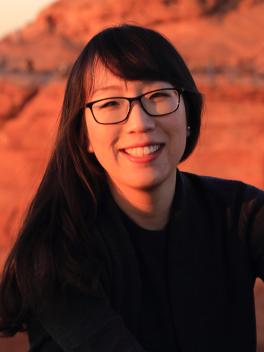
Min Gu is currently a Doctoral Candidate in Art Education at the Penn State School of Visual Arts with a minor in Curriculum and Instruction. Gu received her BA and MA in Art Education with a focus in Chinese Ink Painting from Beijing,China. Gu’s doctoral research explores how disability can be a creative force to produce new knowledge of art and experience and has received various grants and awards. While at Penn State, Min has worked with preservice teachers; nationally, she has given Chinese Painting and Calligraphy workshops for high school students and artists with disabilities across different states. She is an active member and presenter for PAEA, NAEA, and international art educational conferences.
Dissertation Title: The Pedagogy of Waiting: Rethinking Art Education with Disability
abstract
Although disability legislation has provided increased opportunities for students with disabilities to learn art in classrooms and art centers since the 1970s, these students’ experiences have often been overlooked, dismissed, and/or stigmatized by normative understandings of art making and art learning. To challenge such disenfranchisement, this study advocates for the nuanced and differentiated experiences of people with disabilities that would otherwise go unrecognized by ableist art curriculum and pedagogy. By investigating the artistic processes and practices of artists who have disabilities through field observations, I argue for reconceptualizing pedagogical practices and educational content for all learners. Particularly, based on my data analysis of the artists’ everyday practices, I develop the concept of a pedagogy of waiting, which allows for a consideration of embodied differences. A pedagogy of waiting is recursive and attuned to non-symbolic and heterogeneous movements in bodies. It allows time and space for the recurring rhythms in artists’ and students’ experiences to emerge and encourages their differentiated ways of learning and being in the world.
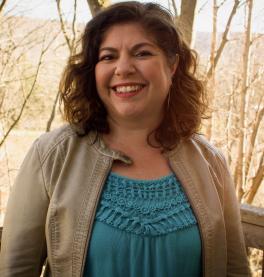
Leslie Sotomayor, Pennsylvania State University
Leslie C. Sotomayor is an artist, curator, and dual PhD Candidate in Art Education and Women’s, Gender, and Sexuality Studies at The Pennsylvania State University. She has curated numerous art exhibitions including, Borrandofronteras/Erasingborders at Penn State and Hilos Rojos, a solo art traveling art exhibition in Havana, Cuba. Sotomayor has numerous publications about her research work in Cuba, feminist curatorial projects, and visual arts practice including: Uncrating Josefina Aguilar: Autohistoria and autohistoria-teoría in feminist curating of a muñecas series in Studies in Art Education (2019) and co-authored Needlework: Forging Pedagogical Spaces Through Fabric Patterns, Mapping, and Childbirth in Art Education (2019), A Feminist Curatorial Art Practice Collaborative Exhibit with Cuban and Cuban-American artists chapter in Feminism and Museum (2017) and Crossing In-Between Diaspora: Writing and Studio Arts as Feminist Practice in Feminism: Past, Present and Future Perspectives, Feminism and Gender Volume 10 (2017).
Dissertation Title: Curating Educational Spaces with Autohistoria-Teorí and Conocimiento: A Process-Oriented Feminist Art Approach
Abstract
This exploratory feminist teacher inquiry, documents and analyzes my experiences teaching the undergraduate course Latina Feminisms, Latinas in the US: Gender, Culture and Society. The focus of this dissertation is on my development and implementation of a transformative feminist-oriented teaching approach for experiencing Gloria Anzaldúa’s theories of autohistoria-teoría and conocimiento toward a sense of belonging in a decolonized course. The purpose of employing Anzaldúa’s theories is to curate educational spaces that decolonize White hegemonic academic canons and to support underrepresented learners who experience a deep sense of not belonging in academia. I explored how to facilitate conocimiento holistic kaleidoscopic practices through seven transformative acts: (a) arrebato susto, (b) nepantla, (c) Coatlicue (d) reframing, (e) autohistoria, (d) renewal, and (f) nepantlera. Autohistoria-teoría is an empowering process of curating my own and students’ transformative experiences toward critical self-reflection, active listening, finding one’s own voice, belonging, and curando-healing. Primary data sources include: field notes, observations, conference meetings with students, and my journal reflections. Secondary data sources include: student work as artifacts, anonymous surveys, class assignments, discussions, and student journal reflections. In my findings from curating the Latina Feminisms curriculum, I witnessed transformational learning from the following: engaged student participation, conscious awakening, relationship building, intimacy, and decolonizing the White hegemonic academic canon.
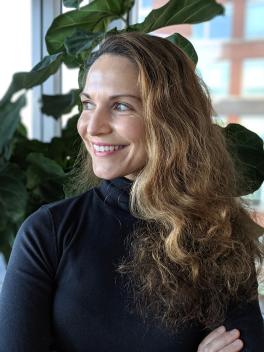
Megan Lucas-Chong, Teachers College
Megan is a museum educator with over ten years of experience working in modern and contemporary art museums. Her goal is to help make art more accessible to people from all walks of life, from toddlers to adults. Megan does so by engaging visitors through dialogue and art making. She is currently researching early childhood programs in art museums and is particularly interested in learning how museums engage young visitors with their collections. In Megan's own art practice, she enjoys experimenting with natural materials while focusing on the human body.
Dissertation Title: An Examination of Early Childhood Programs in New York City Art Museums
Abstract
Over the past decade, art museum programming for visitors under the age of six has increased. Because these programs are so new, many museums are still grappling with ways to address the developmental needs of young children in spaces that were designed for adults. Most of the few studies focusing on this audience offer snapshots of programs from an institutional perspective. My study incorporates the perspectives of program participants, educators, and administrators to examine how programs in three art museums accommodate the developmental needs of young visitors. Observations of these programs will help me understand the elements and dynamics of each session, and how participants respond to them. Interviews with program participants will help me gather more specific responses, while interviews with educators and program managers will shed light into the rationales for how programs are designed and implemented.
This investigation of the making and reception of early childhood programs in art museums will inform the growing number of institutions working to make their collections and spaces more accessible to very young children, ultimately contributing to more relevant experiences for young visitors and their families.
Nicole Pamela Johnson, Teachers College
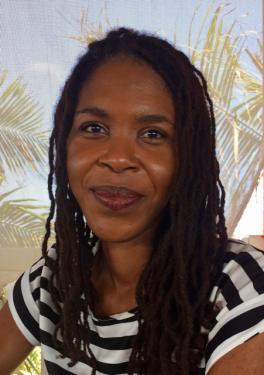
Nicole Johnson is a visual artist and art educator from Kingston, Jamaica. Since 2010, she has worked as an art education instructor/teacher educator in her home city and in the United States. She is currently a doctoral candidate and instructor in the Art and Art Education program at Teachers College, Columbia University. Her core research interests are in higher-education-based art teacher educators’ pedagogical reasoning and learning in the context of change (role/career change, change of teaching context, and changes in the field of art education). Her current research examines the role of problem-solving—specifically, working through tensions, contradictions, and dilemmas faced during the first three years in the professorial role—in collegiate art teacher educators’ (re)constructions of pedagogy and of professional identity.
Dissertation Title: Early-Career Art Teacher Educators' Professional Tensions as Catalysts for Professional Growth
abstract
Collegiate art teacher educators who teach in pre-service art education programs enter this role with a variety of professional experiences. These prior experiences naturally shape the ways they think about and approach teaching art. However, early career art teacher educators’ existing philosophies and practices do not necessarily equip them with the requisite knowledge to teach prospective teachers to develop their own knowledge about teaching art. Although existing studies in art education have examined the relationships between PreK-12 pre-service and in-service art teachers’ prior knowledge and preparation, few studies attend to these relationships as they affect the work of art teacher educators working in higher education settings. This qualitative case study examines: (a) the preparation-practice relationships of six art education professors who are in their first three years in the role; (b) the ways in which their espoused practices, values and theories about art and art education might support/confirm or conflict with the pedagogical [and philosophical?] demands of their work/practice situations; and (c) the insights these art teacher educators gain about their educational purposes and practices in response to thinking and working through these tensions.
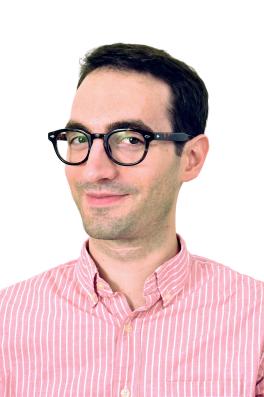
Matthew Capezzuto, Teachers College
Matthew Capezzuto is an EdD Candidate in Art & Art Education at Teachers College, Columbia University. He previously earned an MFA in Painting at Yale School of Art, in 2008, and a BFA in Painting and Art History at Ohio University in 2006. He has taught studio art courses at Housatonic Community College (Connecticut) since 2010, and a seminar in college teaching at Purchase College (New York) since 2018. In 2017-2018, Matthew was the Teaching Fellow at the American Folk Art Museum, and in 2018 he joined the Noguchi Museum as a part-time educator. He continues to paint at his home in Queens, New York, and his paintings have been exhibited in New York, Connecticut, and Maine.
Dissertation Title: The Severaled Hands of Johannes Whisler: A Historical Study of Handwriting and Drawing
abstract
This historical case study plumbs the relationship of a 19th-century artifact in the collection of the American Folk Art Museum—the Arithmetic Book of Johannes Whisler—to thefield of artifacts (and scholarship) with which it has been associated, the Pennsylvania German illuminated documents known as fraktur. With reference to creativity theories (particularly those articulated by Howard Gruber and Vlad Glǎveanu), Whisler’s book is described in this study as a system that unfolds in historical time, and which is not contained solely in the material of the book but extends to its material and cultural surroundings, including scholars, photographs, auction houses, and museums. Asthe book moves through history, it interacts with and reveals the consistencies and inconsistencies within its system, challenging a static classification of the object. The interpretive openness of the artifact is demonstrated through an exploration of the affective and somatic qualities of Whisler’s handwriting, a mark-making practice that indexes his artistic development. The study concludes with implications for art education, with regard to interpretive strategies and their translation into artmaking practices.
